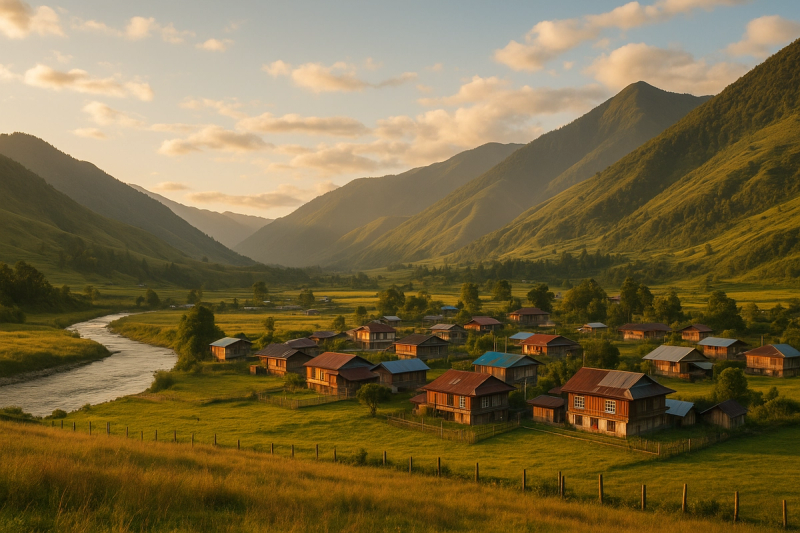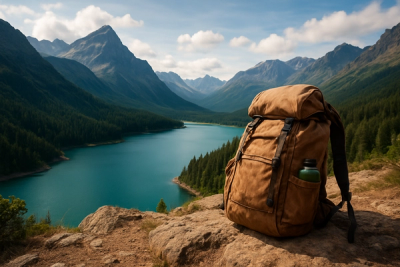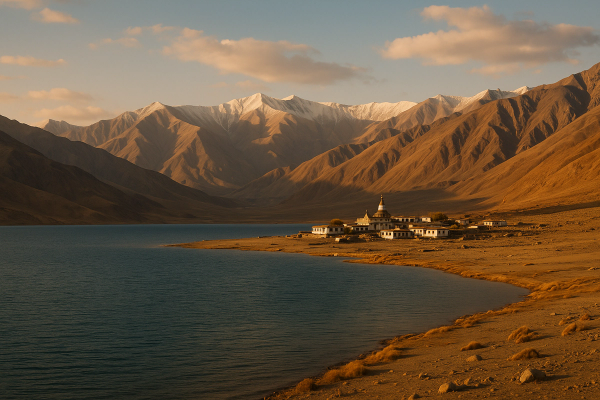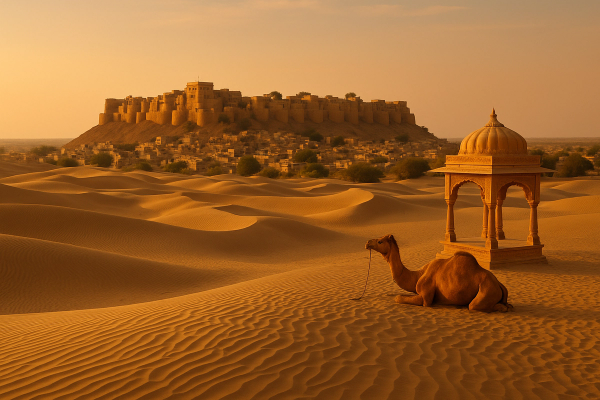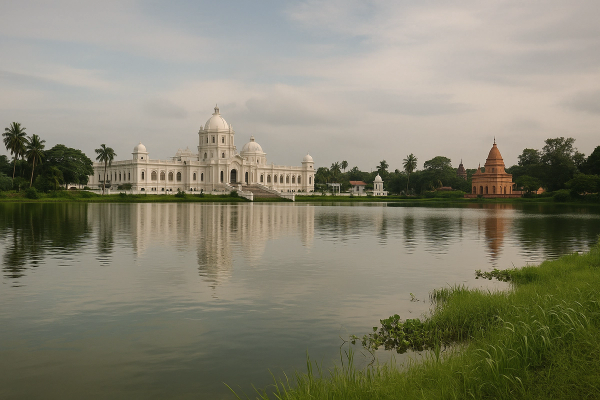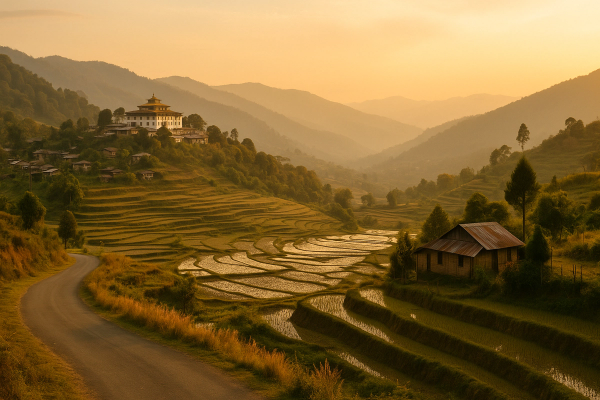Mechuka, Arunachal Travel Guide: How to Reach, Homestays & Treks — the valley that kinda stays with you#
Um, so quick heads up before we dive in. I’m writing this like a desi traveler would chat with you over chai, you know, pulling together notes from locals, homestay hosts, APSTS staff, and a bunch of friends who just did Mechuka recently. It’s personal but also practical, mixed with on-ground updates that actually matter. Mechuka (also written Menchukha) sits in Shi-Yomi district of Arunachal Pradesh, tucked close to the Indo-Tibet border. The place isn’t glamorous in that manicured-hill-town way. It’s raw, quiet, gorgeous in this big-sky-meadow-river kind of vibe that makes you breathe slower. Honestly I didn’t expect the plain to be so wide and the light to be so soft on the wooden houses. And the way everybody says the valley at sunrise looks like a movie set… not wrong. Early 2025 the road’s improving in patches, but it’s still real Himalaya driving—slow, careful, reward in the end.¶
Where Mechuka is and why it feels different (not just another hill station)#
Mechuka sits around 6,000 ft in a broad valley cut by the Yargyap Chu (part of the mighty Siyom/Siang system). The old monastery at Neh—Samten Yongcha Gompa—overlooks the valley like a guardian from another era. People here are mainly from the Memba community (with Tibetan-Bhoti cultural roots), alongside Adi folks as you move downriver towards Aalo. You see prayer flags fluttering, wooden bridges that look like they’ll take you into a folk story, army posts reminding you you’re near the border, and the kind of meadows where the sky just feels whiter. It’s not crowded, not full of souvenir shops, not polished. Which is exactly the charm. Nights can get cold even in March. Days are lazy-walk friendly. And the silence? unreal.¶
Best time to visit (and when the hills basically say nope)#
Broadly, October to April is your window. October-November is crisp, golden, post-monsoon clear—treks feel easy, grass is green, nights are cold but bearable. December to February get proper winter vibes with frost and occasional snowfall in and around Mechuka; the valley looks straight out of Ladakh-lite. If you like chilly mornings, thick quilts, that crunchy ice on wooden walkways, this is it. March-April has rhododendrons blooming and longer daylight for hikes. Monsoon (June to September) is dramatic, but honestly roads can get messy, landslides happen, visibility drops, and APSTS or shared Sumos might get delayed. If you’re flexible and up for slow travel, cool, else avoid deep monsoon. The Mechuka Adventure Festival (when it’s hosted) typically slots around November with mountain biking, cultural stuff, and you’ll see a small burst of visitors—do check latest dates locally because it’s not guaranteed every year.¶
Permits, checkpoints, and small rules that will save you headache#
Indian citizens need an Inner Line Permit (ILP) for Arunachal. It’s fairly easy now—apply online on the Arunachal eILP portal, pick Shi-Yomi (district), upload ID, pay fee, and carry printed copies plus soft copies. You’ll be asked at checkpoints like Pasighat, Aalo, and enroute to Mechuka. Non-Indians need Protected Area Permit (PAP) and usually a registered tour operator to handle it—group of two or more, standard requirement. Drones are sensitive near border and military zones. There are clear no-photography boards around certain bridges, helipads, and camps—just respect it. Alcohol’s available but drink responsibly; public intoxication doesn’t sit well with army or locals. Oh and please carry cash. ATMs are random—SBI might exist but may be down, and UPI works only when the network gods are awake.¶
How to reach Mechuka (this is where the real planning happens)#
Simplest flow for most travelers is Assam to Arunachal to Shi-Yomi. Nearest big airport: Dibrugarh in Assam. From Dibrugarh, you can take a taxi or bus to Pasighat (about 4–5 hours), then go onward to Aalo (Along) and finally Mechuka. Alliance Air runs flights to Pasighat (check schedules), which helps cut road time. Aalo to Mechuka is roughly 180–200 km and can take 7–9 hours depending on road work and weather. APSTS (Arunachal Pradesh State Transport Service) has buses on the Pasighat–Aalo sector, and from Aalo to Mechuka there are shared Sumos that start early morning, usually around 5–6 am—buy your seat a day before if you can. Private Bolero/Scorpio taxi will cost more (think 12–18k one way, depends on season and mood of driver). There’s an IAF Advanced Landing Ground at Mechuka, but civilian flights aren’t regular; occasionally Pawan Hans heli services happen under UDAN but they can be irregular, so don’t bank on it unless you see a confirmed schedule. Roads are mostly tarred now in sections, with the usual BRO patches under work. Night driving—no, just don’t. Fog comes, animals wander, and the valley deserves patience.¶
Road trip route highlights (Pasighat → Aalo → Mechuka)#
Honestly, this route itself is a mini vacation. Pasighat has the Siang river moods and busy bazaar. As you head to Aalo, there’s Pangin viewpoint where the blue Siang curves like a giant ribbon—stop for photos, it’s pretty iconic. In and around Aalo, eat a solid meal, stock cash and petrol, last big town vibes. Then the Mechuka leg: expect narrow sections, piney patches, rivers cutting close to the road, those wooden bridges that look like they were built just yesterday but are older than our Instagram accounts, small tea stalls at odd bends where you get super sweet chai and biscuits. You’ll cross villages and cliffs and occasional waterfalls. The final descent into Mechuka opens up into this flat valley—green in autumn, white-tipped in winter—and you’ll spot the runway like a long stripe. In the distance, prayer flags. Kinda mind-blowing after hours in the hills.¶
Homestays in Mechuka: what you actually get and typical prices#
Don’t expect fancy resorts. Expect family-run homestays with wooden rooms, valley views, hot water in buckets (sometimes geysers, not everywhere), and food like a warm hug. Price-wise, think 1,200–2,000 per person per night for a basic room with dinner and breakfast included. Bigger rooms with attached bath or newer builds might be 2,500–3,500 per room per night, sometimes extra for meals. In peak months (Oct–Nov, Mar–Apr) book in advance because, well, Mechuka might be wide but beds are limited. Power cuts happen. Bring a small extension board if you travel with gadgets. Blankets are thick but if you’re a winter weakling like me then carry a liner or extra thermals. Hosts are sweet, will help sort local guides, river walks, monastery visits, that kind of thing. Some stays cluster near Neh village (for the old Gompa trek), others along the river side. Ask for a room with morning light if you love waking up to meadows glowing—trust me, it’s worth it even if you’re not a morning person.¶
Food scene: tingmo, thukpa, yak, and frankly, a lot of Maggi when it rains#
Cuisine is simple, Tibetan-Memba heartland stuff. Thukpa when it’s cold hits different. Tingmo (steamed buns) you tear and dip into gravy—pork, chicken, veg. Shaphaley (fried stuffed bread) is a legit treat. Butter tea is an acquired taste, feels weird at first, then you kinda crave it. Yak meat can be available seasonally. Rice beer—apong—comes out during gatherings. Small eateries make momos the way you like them, though don’t expect big-city variety. Prices are fair: thukpa around 120–180, momos 100–160 depending on filling, tingmo sets 150-ish. In off days the tiny dhabas might say no fresh veg—rain messes supply. Carry a stash of nuts, dates, and chocolate to manage long treks. Oh and, if a homestay aunty offers you a second bowl of soup, just say yes. You won’t regret it.¶
Treks & day hikes: the classics and a few quieter corners#
- Samten Yongcha Gompa (Neh Monastery): the old one, about 400 years they say. Short hike up from Neh village, and you get a view that makes you go quiet—valley sprawled, river lines, wooden roofs. Go early for soft light.
- Gurudwara Guru Nanak Taposthan: a sacred spot associated with Guru Nanak’s journey, maintained with the army’s support. The walk is gentle, takes you along meadows and river bends. Be respectful, cover your head.
- Dorjeeling village ramble: yes, Dorjeeling not Darjeeling. Easy trails past homes with carved windows, a hanging bridge photo-op, and kids waving.
- River-meadow loops: follow the valley edge, find those cow paths. Keep an eye for sudden dips and slippery grass.
- Towards Yarlung / zero-point style viewpoints: permissions may be needed near army zones, don’t just wander. Local guides can tell you exactly what’s allowed.
Difficulty is generally easy to moderate. Elevation isn’t crazy but cold and wind can make you feel tired quickly. Guides cost around 1,500–3,000 per day depending on trek length and whether they include basic lunch. Wear proper shoes. Carry a windproof layer and gloves even in October—you’ll thank me later.¶
Tiny stories that make the valley feel human (from folks who just got back)#
A friend told me he was crossing one of those handwoven wooden bridges after light rain—the river was a loud whisper—and a local kid just walked along, tapping the rope with his palm like a drum. No words, just that easy rhythm. Another traveler said a homestay uncle kept their room heater on low even when power cut because he had hidden a little battery backup he’d rigged himself—“for guests only,” he grinned. Someone else shared how butter tea felt strange on day one, then became this comfort on day four, like home in a cup. Different people, same sentiment—the valley is small gestures and big skies. That’s Mechuka.¶
Safety, connectivity, and, uh, the truth about ATMs#
Network varies. Jio works in patches now, BSNL is old faithful in some lanes, and Airtel can be moody. Often one SIM gets a random bar of 4G and your other phone sits like a rock. Download offline maps before leaving Aalo. Carry cash—SBI ATM may exist but please don’t count on it. Some homestays accept UPI when signal is up, yet it’s risky. Fuel—top up at Aalo, because local pumps can be limited and in winter fuel supply is slower. Health-wise, the altitude is mild compared to high Himalaya but nights are cold, so don’t do the meadows in sneakers without socks, please. Small medical facilities are present; in emergencies, the army is helpful but that’s not something to rely on as a plan. Respect army areas. Don’t fly drones near camps. Ask before photographing people. Don’t litter, the wind will carry your plastic far into someone’s field. Mechuka is friendly, but it’s still the border belt—keep it simple, keep it kind.¶
How much does a Mechuka trip cost? Rough 5-day budget if you plan smart#
Let’s say you do Dibrugarh → Pasighat → Aalo → Mechuka → back. Per person approx on a lean backpack plan:
- Transport: APSTS + shared Sumos across sectors could be 3,000–4,500 total (varies). Private taxi for the Aalo–Mechuka leg alone might be 12–18k one way, split with friends if possible.
- Stay: homestays 1,200–2,000 per person per night with basic meals included. Five nights ~6,000–10,000.
- Food: outside meals, snacks, chai, let’s add 1,000–2,000.
- Permits: ILP minimal fee.
- Guides: one or two days of hikes, 2,000–5,000.
- Misc (fuel for self-drive, extra warm gear, cash buffer): 2,000–4,000.
So total anywhere between 12k and 25k-ish per person for five days if you’re careful. Self-drive or full private taxi comfort will push it to 25–40k depending on group size and your appetite for convenience. Prices swing with season, fuel, and, um, how well you bargain without being rude.¶
- Day 1: Dibrugarh → Pasighat. If you’re flying into Pasighat, even better. Walk the bazaar, soak the Siang air, eat fish thali or momo dinner. Prep cash and snacks.
- Day 2: Pasighat → Aalo. Slow. Stop at Pangin viewpoint. In Aalo, pick a stay near market for breakfast next morning. Confirm Sumo seats or your taxi. Early sleep.
- Day 3: Aalo → Mechuka. Start before sunrise. Tea-stalls, wooden bridges, many photo halts. Reach by afternoon if roads are friendly. Check-in, early stroll along river. Sunset is gold.
- Day 4: Samten Yongcha Gompa + Dorjeeling village ramble. Lunch back in homestay, then Gurudwara walk for evening calm. Ask a local guide if you plan to push deeper toward army viewpoints—permissions matter.
- Day 5: Chill day or meadow loop trek, buy small local handicrafts, eat another thukpa, and begin the drive back to Aalo. If you have time, add a sixth day just to sit by the river doing nothing, which is, frankly, the best item in Mechuka.
What to pack and little things that people forget#
- Windproof jacket that actually blocks wind, not just looks nice.
- Wool cap, gloves, warm socks. Even in October nights can bite.
- Torch/Headlamp because outages happen.
- Power bank, extension cord, spare charging cable.
- Offline maps, ILP copies printed twice.
- Reusable water bottle, small garbage bag. Don’t leave a mess, me and him don’t like that kind of traveler.
- Medicines: cold, fever, ORS, bandaids.
- Cash. Like, actual cash. UPI will ghost you at the worst moments.
And if you’re a tea person, carry your fav tea bags. Homestay kitchens are chill about hot water, you’ll feel at home faster.¶
Culture notes and how not to be a jerk#
Memba and Adi traditions are layered, old, and living—don’t treat it like a museum. Dress modest at monasteries and religious spots. Ask before entering courtyards. Offer a small greeting—Tashi Delek isn’t wrong and a smile works everywhere. Kids love being photographed but check with parents. Buy local, even if it’s a small woven wristband. Food—eat what’s served before asking for fancy variations, you’re in someone’s home. Tip humbly, not dramatically. Try apong but don’t get loud. And for the love of all things nice, don’t pick flowers from shrines. It’s not a decor piece for your Insta flatlay.¶
What’s changing lately in Mechuka (and what to verify before you go)#
Roads are getting blacktopped in sections—BRO crews do real work here—but there are still raw patches. More homestays have sprung up the last couple of seasons, some with better insulation and cleaner bathrooms than old-school guesthouses—yay. Jio towers went up in a few pockets, so you’ll get a miracle bar of signal more often than before. Adventure@Mechuka—when it’s hosted—pulls small biking and local cultural events, but again, confirm dates. Plastic waste awareness is rising; you’ll see signs, use dustbins, but carry your trash out anyway. Pricing has inched up, especially post-pandemic years, so book early, compare stays, and ask clearly what’s included (two meals? hot water? room heater? packed lunch for trek?). Upfront questions save awkward arguments later.¶
If you like places that feel less like a checklist and more like a pause-button, Mechuka is that slow, wide breath you didn’t know you needed.
FAQs people keep texting me about before packing#
- Is ILP mandatory? Yes for Indian citizens. Do it online, print copies.
- Can foreigners visit? Yes with PAP and usually a registered operator. Rules apply.
- Is there snow? Dec–Feb chances are real. Early March can have frost.
- Are there ATMs? Might be a SBI, but please carry cash. Don’t rely on ATM.
- Which network? Jio patches, BSNL old faithful in some lanes, Airtel moody.
- Self-drive possible? Yes, but go slow. No night drives. Check landslide updates.
- Drone okay? Avoid near army. Follow local rules. Ask before flying anywhere.
- Family-friendly? Totally if kids like meadows, quiet days, simple food.
- Veg food? Yes, thukpa, alu dishes, tingmo, rice. Meat heavy but veg doable.
- Festival dates? November when held—verify close to travel.
Final thoughts, from one desi traveler to another#
Mechuka’s not about doing ten things a day. It’s about two walks and one thukpa and three hours of staring at a river you can’t name right. It’s about climbing to that old monastery and just… letting the valley talk. Logistics aren’t perfect, but the place isn’t trying to be perfect anyway. Plan tight where needed (permits, cash, transport), and leave gaps to wander. If you want more long-form guides, itineraries, and real traveler inputs, I keep finding solid stuff on AllBlogs.in—worth bookmarking before your next northeast run. Safe travels, carry warmth, be kind, don’t litter, and let Mechuka be Mechuka—slow, quiet, slightly magical.¶

